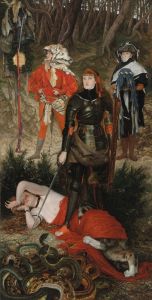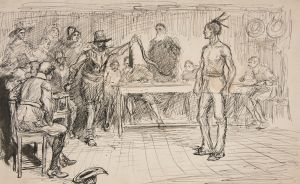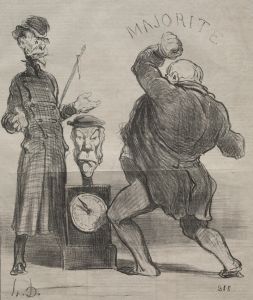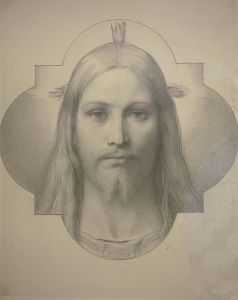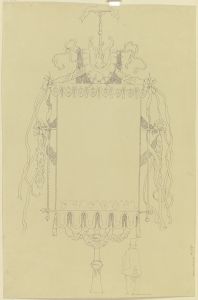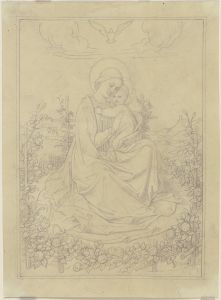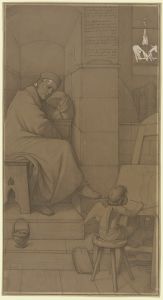
Viele laufen nach dem Ziele, wenige erreichen es
A hand-painted replica of Eduard von Steinle’s masterpiece Viele laufen nach dem Ziele, wenige erreichen es, meticulously crafted by professional artists to capture the true essence of the original. Each piece is created with museum-quality canvas and rare mineral pigments, carefully painted by experienced artists with delicate brushstrokes and rich, layered colors to perfectly recreate the texture of the original artwork. Unlike machine-printed reproductions, this hand-painted version brings the painting to life, infused with the artist’s emotions and skill in every stroke. Whether for personal collection or home decoration, it instantly elevates the artistic atmosphere of any space.
Eduard von Steinle was a notable 19th-century Austrian painter, associated with the Nazarene movement, which sought to revive honesty and spirituality in Christian art. One of his works, "Viele laufen nach dem Ziele, wenige erreichen es," which translates to "Many run towards the goal, few achieve it," reflects the thematic and stylistic elements characteristic of his oeuvre.
Steinle was born in Vienna in 1810 and was deeply influenced by the religious and historical painting traditions of his time. He studied at the Academy of Fine Arts in Vienna and later moved to Rome, where he became associated with the Nazarene movement. This group of artists aimed to return to the purity and spirituality of medieval and early Renaissance art, often focusing on religious and moral themes.
"Viele laufen nach dem Ziele, wenige erreichen es" is emblematic of Steinle's focus on moral and allegorical subjects. The painting likely explores themes of aspiration, perseverance, and the challenges inherent in achieving one's goals. While specific details about the painting's composition and style are not widely documented, it can be inferred that Steinle employed a detailed and narrative-driven approach, typical of his other works. His paintings often feature precise lines, clear forms, and a harmonious color palette, all of which contribute to the storytelling aspect of his art.
Steinle's work was well-regarded in his time, and he received numerous commissions for frescoes and religious paintings, particularly in Germany. His style was influenced by the early Renaissance masters, and he often incorporated elements of Gothic art into his compositions. This blend of influences is likely present in "Viele laufen nach dem Ziele, wenige erreichen es," where the moral message is conveyed through a carefully constructed visual narrative.
The painting's title suggests a philosophical reflection on the nature of ambition and success, a common theme in 19th-century art and literature. During this period, artists and writers frequently explored the tension between individual aspirations and societal expectations, often highlighting the difficulties faced by those who strive for greatness.
Steinle's contribution to art extends beyond his paintings; he was also a respected teacher and mentor. He held a professorship at the Städelsches Kunstinstitut in Frankfurt, where he influenced a generation of artists. His emphasis on moral and spiritual themes, as well as his dedication to craftsmanship, left a lasting impact on his students and the broader art community.
While specific exhibitions or collections featuring "Viele laufen nach dem Ziele, wenige erreichen es" are not well-documented, Steinle's works are held in various public and private collections, particularly in Austria and Germany. His legacy as a key figure in the Nazarene movement and his contributions to religious and allegorical art continue to be recognized and studied by art historians.
In summary, Eduard von Steinle's "Viele laufen nach dem Ziele, wenige erreichen es" reflects the artist's commitment to exploring moral and spiritual themes through a narrative-driven and stylistically precise approach. Although detailed information about the painting is limited, it remains a testament to Steinle's artistic vision and his role in the 19th-century art world.





